Friends, let me tell you. I have been a King Arthur Baking fanatic for years. For just as long, however, I’ve been hearing a steady drumbeat about White Lily flour, so I finally decided to give it a try several months ago. This isn’t unusual; I’m always trying to figure out how to improve upon my recipes, so I frequently test ingredients to determine what works best, and it was time to see if my loyalty to King Arthur All-Purpose Flour for daily use was the best strategy.
**At the outset, I want to make clear that this all-purpose flour test is not sponsored by King Arthur Baking or White Lily. All thoughts and opinions are my own, and have not been influenced by any outside sources.**
When I do an ingredient test, I go into it with no expectations. It’s the only way to give a fair shot to contenders. I’ve been extremely surprised in the not-so-distant past with butter and egg tests, so I completely understand the importance of not giving any team home field advantage.
It was difficult, Friends. Because I do love my King Arthur Flour. BUT it’s the only way to be fair about these things.
In this Post:
The Method
When I started this test, I knew that I wanted to do a true head-to-head test of these two titans in the baking industry. For this test, I used two commercially-available flours that you can readily find in a grocery store. Here are the stats on each:
King Arthur All-Purpose Flour: Unbleached, unenriched, unbromated flour. 11.7% protein content. Made from hard red wheat.
White Lily: Bleached, enriched, unbromated flour. 9% protein content. Made from soft red winter wheat.
Flour Texture
When doing ingredient tests, I start simply. By looking at the products. Actually reviewing the products side-by-side. In this case, I got into it and did an unscientific texture check by rubbing each of the flours in my fingers.
The test of these flours has included four different recipes to date: my Snickerdoodle Pound Cake, my BwB Snickerdoodle Cookies, my Classic Peach Pie, and my Lemon Cake with Cream Cheese Frosting. The reason was simple: I wanted to test how both flours performed overall with different items.
There is a noticeable difference between the two. The White Lily flour actually feels softer between the fingers. This has everything to do with the fact that, at 9% protein, White Lily’s all-purpose flour is milled from soft red winter wheat, while King Arthur Baking’s all-purpose flour is milled from hard red wheat (and comes in at 11.7% protein).
From a pure protein (and texture) standpoint, White Lily All-Purpose flour is more consistent with King Arthur Baking’s Cake Flour, and not King Arthur Baking’s All-Purpose flour. BUT this is a comparison of the two companies’ all-purpose flours, so I continued with both all-purpose flours here.
Snickerdoodle Pound Cake
I picked the Snickerdoodle Pound Cake for this test because it’s kind of my signature. So, to test these flours in my kitchen, I wanted to make a cake that is familiar to my kitchen.
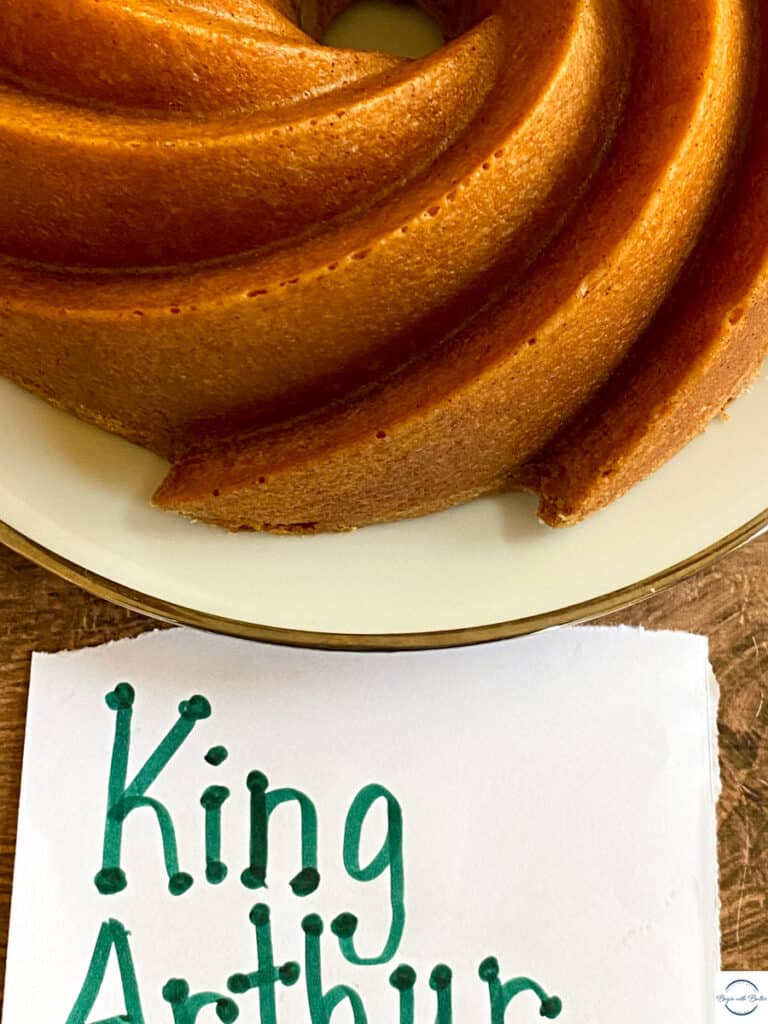
It’s also the most popular pound cake on my site, so I felt like it was a good pound cake representative.
The two batters looked the same until the addition of the flour mixture. At that point, it became clear that I was working with two very different products. The batter with the White Lily flour was noticeably looser and more silky. That was to be expected, considering that the protein content was so much lower for the White Lily flour (for more on protein content and how it impacts baked goods, take a look here!).
The bake time for each cake was quite similar: it took about 70 minutes for each one.
But that’s where the similarities ended.
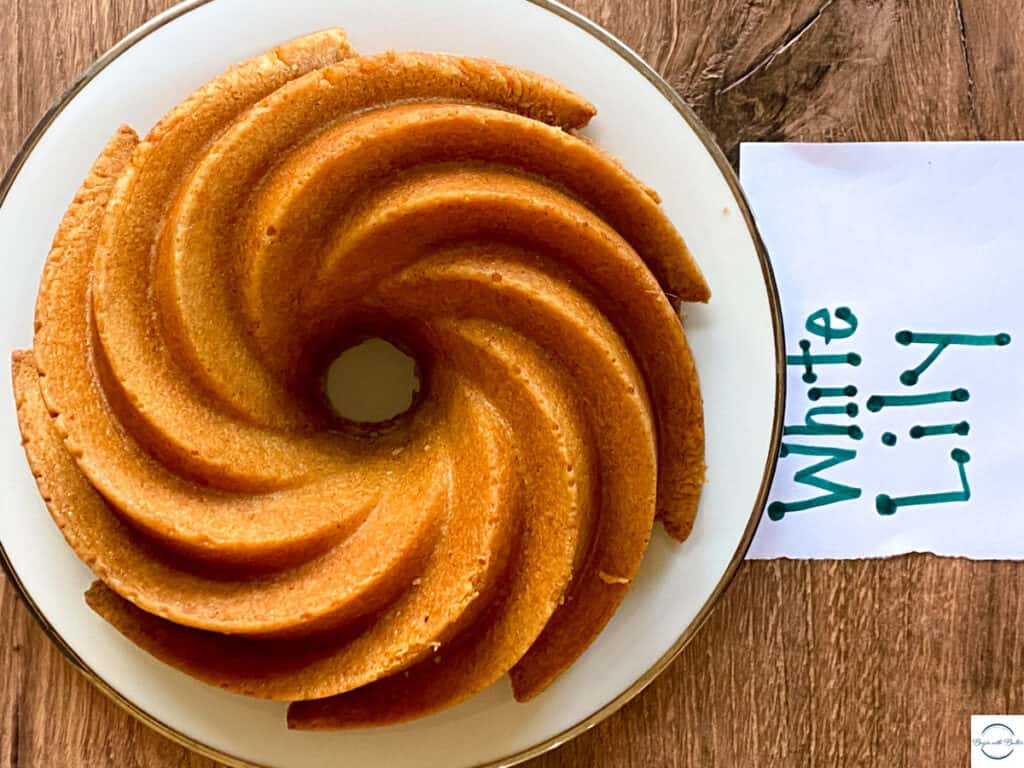
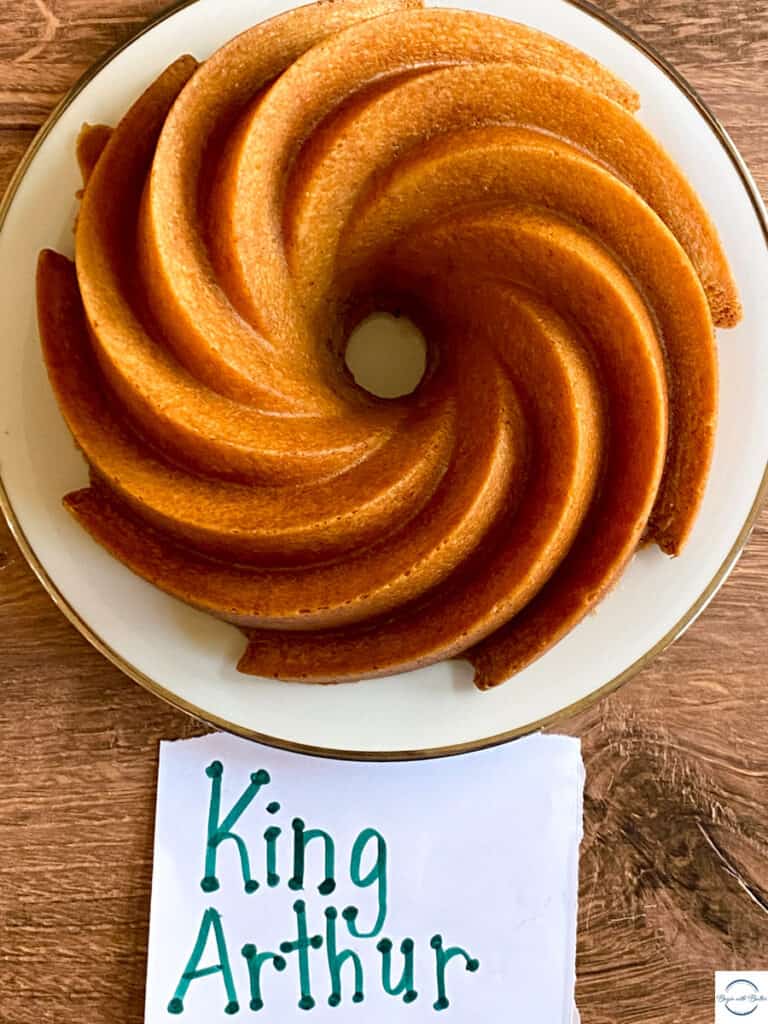
The Finished Cakes
Both of the cakes came out of their pans nicely. That was to be expected, though, since I buttered and floured the pans the same way. There was no sticking whatsoever with either cake.
Why is that relevant? Because the edges on the White Lily cake were not nearly as sharp as the edges on the King Arthur cake. I’m kind of a stickler for sharp edges on bundt cakes, so this was a big deal for me.


The edges on the White Lily cake were not nearly as crisp and defined as I’m used to getting from my pound cakes. So, King Arthur was a clear winner for me here.
However, pound cakes are about more than sharp edges. Taste and texture are just as important, because…well, it’s cake!
Not surprisingly, the texture of the cakes were quite different. The White Lily cake had a looser crumb that was more delightfully crumbly. This isn’t a bad thing with cake! Indeed, it’s what I want in a layer cake.
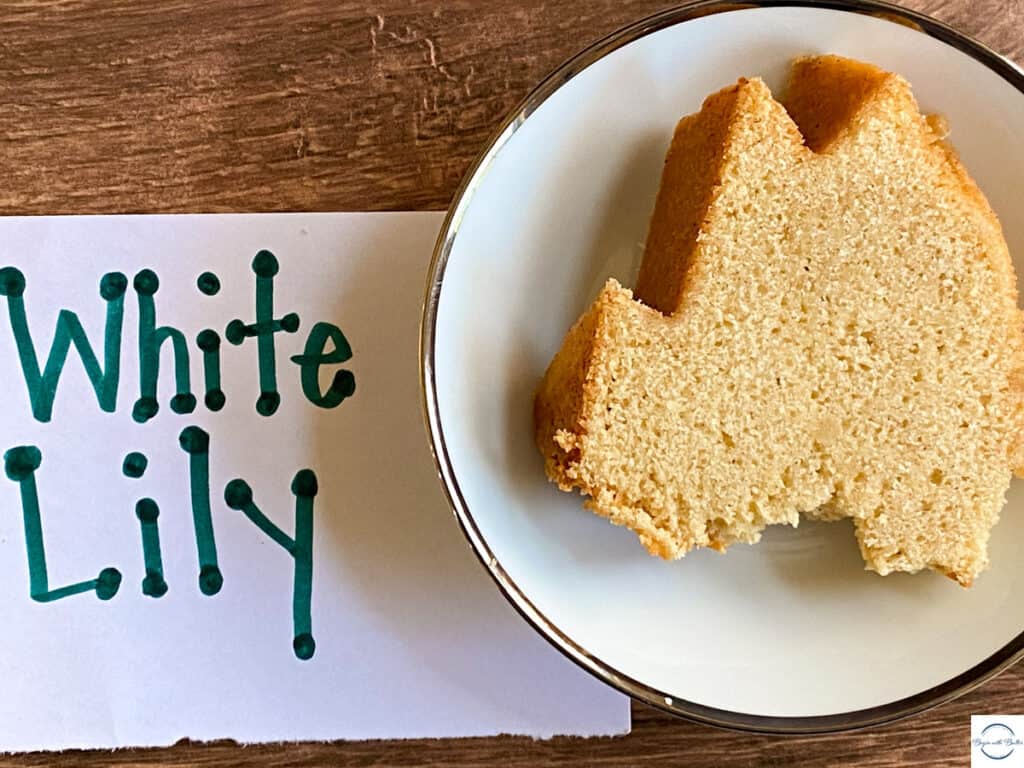
The King Arthur cake had the tighter crumb that I want from a pound cake. This is unsurprising, since I developed the cake using King Arthur Flour in the beginning.
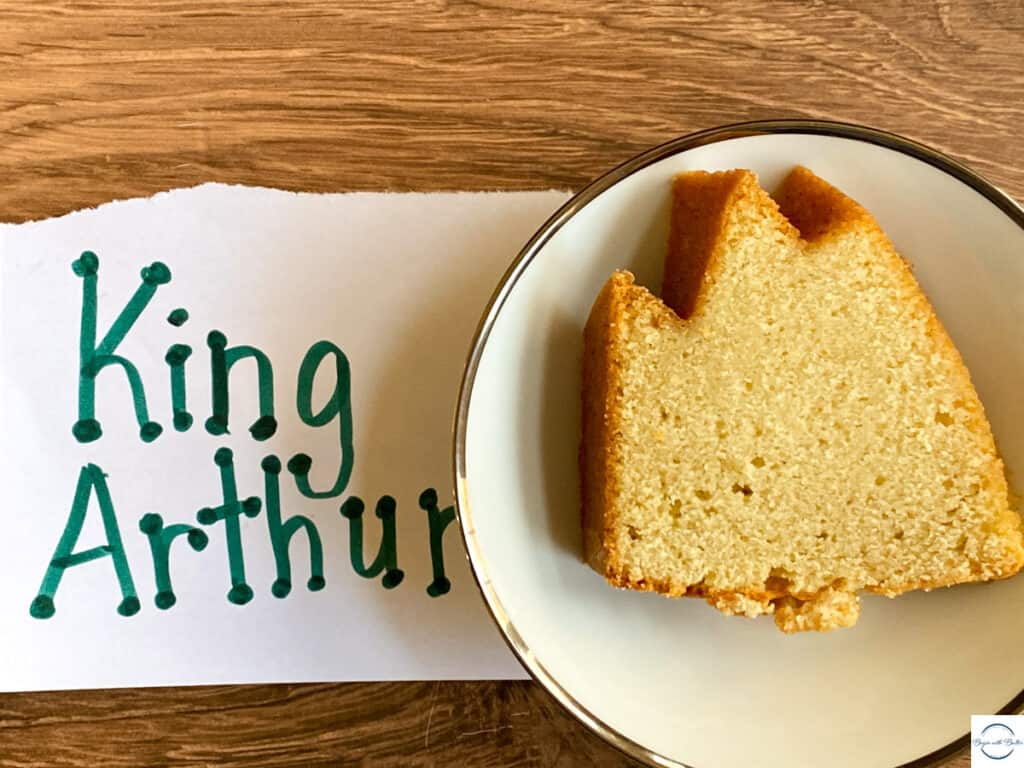
And here’s the side-by-side picture to show you the texture of each cake. The crumb of the White Lily cake is looser and lighter than the crumb of the King Arthur cake.
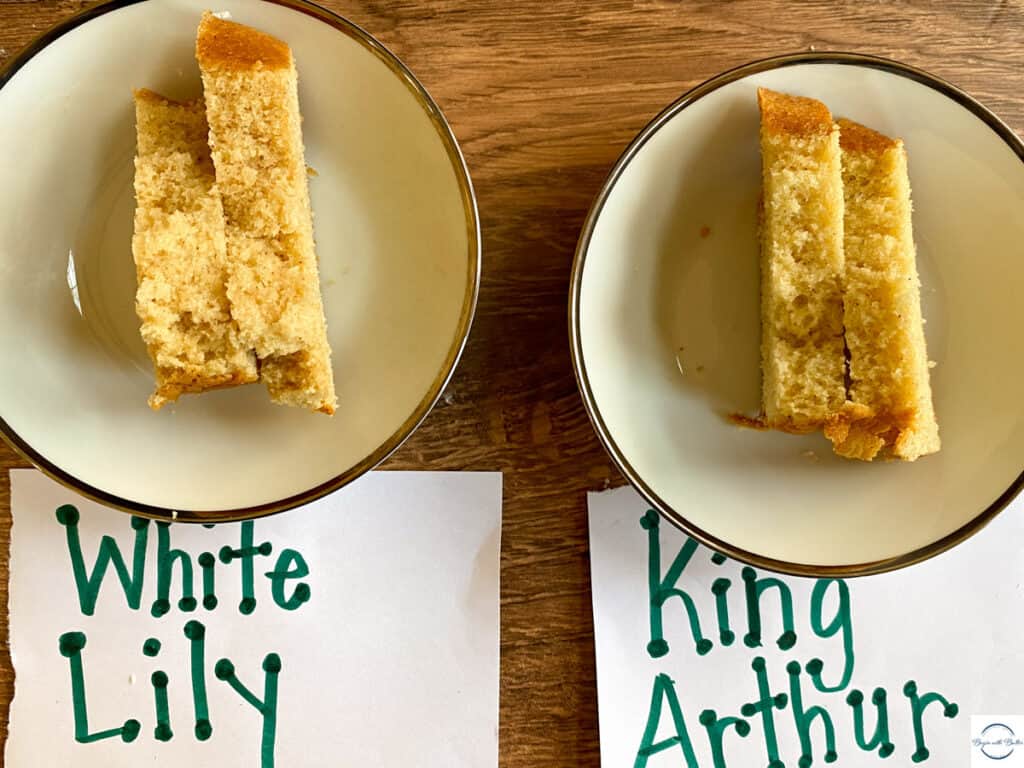
Honestly, there’s no wrong answer here. They are both premium flours. So, for texture, it really depends on the finished product that you want from your pound cakes.
If you’re asking me, though, I develop pound cakes to have a tighter crumb that doesn’t really crumble apart when you’re walking around with it in a napkin. (Yes, this is a real test!). So, King Arthur Flour won for me on a texture front.
…But How Did They Taste?
Of course, the ultimate arbiter of any baked good is taste. I can make a cake look pretty all day, but if it doesn’t taste good, it’s not a success.
There was a marked difference in taste! So much so that even I was shocked.
Let me start by saying that they both tasted good! But, with the White Lily cake, the flour taste was more pronounced. The mouthfeel was softer (not surprising, since the batter was so much smoother than the King Arthur batter), and reminded me more of a birthday cake than a pound cake.
Again, not a bad thing. Just not what I was going for when I developed this cake.
The King Arthur cake was as expected. Consistently delicious and tasted exactly as I wanted it to taste. The flour-y taste was noticeably absent from this cake (not that it’s super prominent in the White Lily cake, but it is there). The King Arthur cake tasted exactly as I intended this cake to taste. And that made me super happy.
Winner of the Snickerdoodle Pound Cake Battle: King Arthur Flour
Would you like to save this post? 😊
Snickerdoodle Cookies
Next up in the flour test was my favorite cookie of all time.
So, absolutely no pressure whatsoever. LOL
It was time for the snickerdoodle cookie test.
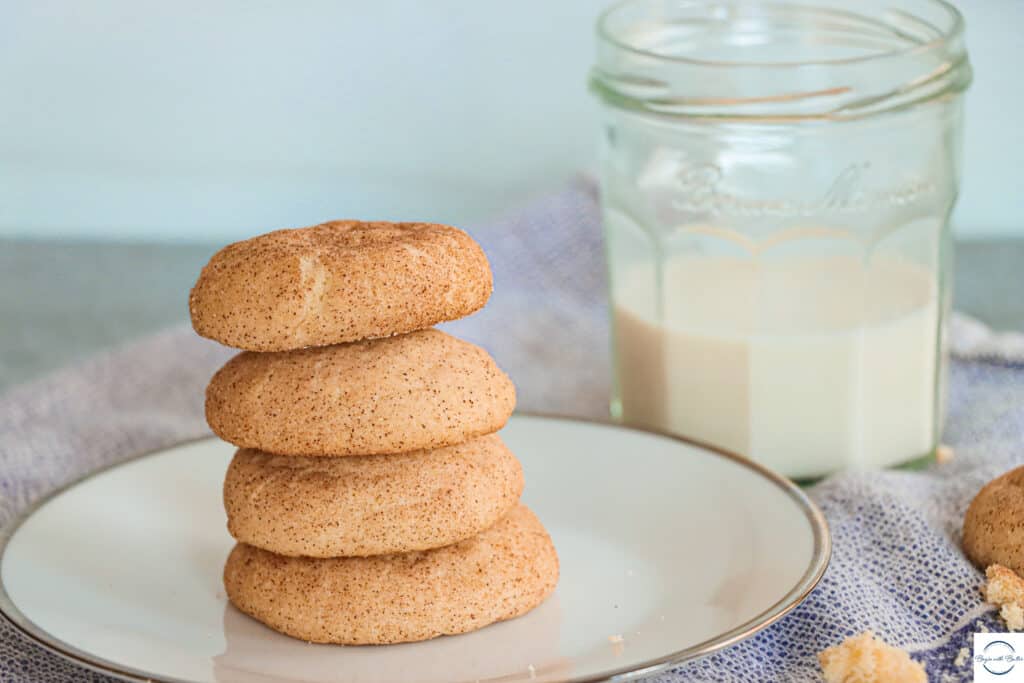

The Dough
Once again, when I mixed the dough, the White Lily dough was noticeably more loose. It was still a cookie dough, but it wasn’t nearly as stiff as the King Arthur cookie dough. This didn’t concern me, since ultimately the texture of the dough wouldn’t necessarily impact the finished texture of the cookie. But I took note!
The Bake
Again, the bake time was identical for each cookie. Five minutes on the first side, four minutes on the second side. The two batches baked equally and looked nearly identical. In fact, it was hard to tell them apart!
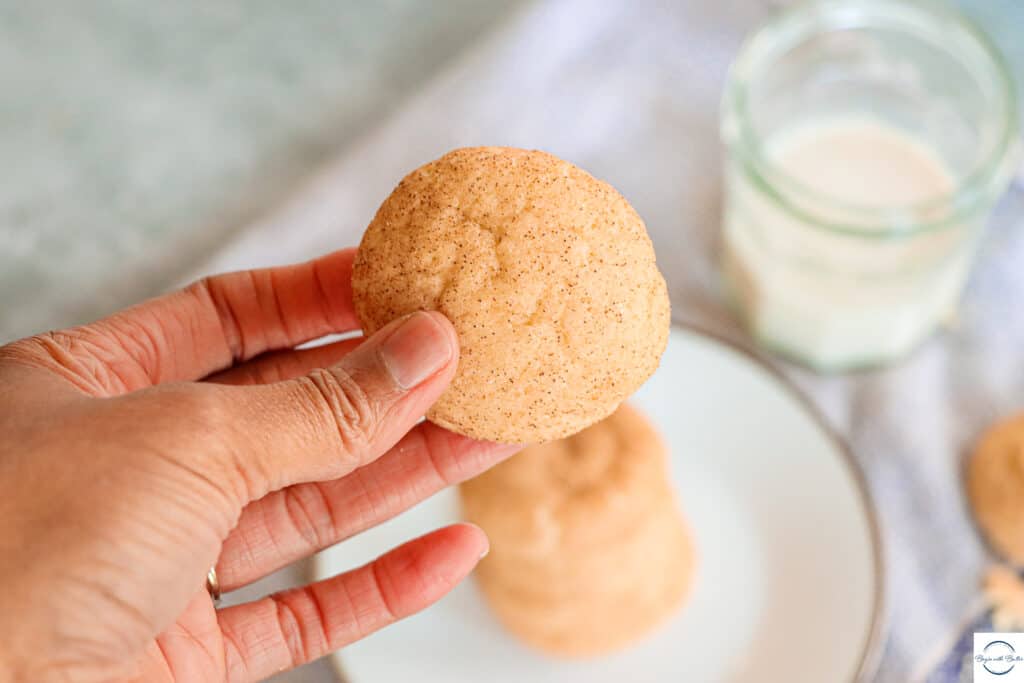

And Finally, the Result
Texture-wise, they were nearly identical. I love a thick, chewy snickerdoodle cookie and neither of these flours disappointed on that front. I was truly happy to see that my cookies could produce a nice chewy cookie with either flour.
Once again, though, the difference came in the taste. With the White Lily cookie, I once again tasted more flour. It wasn’t the most off-putting taste, but it did impact the taste for me.
With the King Arthur cookie, I did not notice that taste. Just pure snickerdoodle nirvana. I might be splitting hairs though…
BECAUSE…
My children positively devoured the White Lily cookies. If they tasted flour (or anything off-putting), they didn’t tell me. Of course, it’s possible that the rate at which they were inhaling the cookies means that this was a failed experiment. With the sheer speed of consumption, they might not have tasted much of anything except snickerdoodle goodness.
This was good news to me.
Winner of the Snickerdoodle Cookie Battle: Tie
Layer Cakes
Remember when I said earlier that White Lily flour is more akin to cake flour than other “all-purpose” flours? Well, I needed to figure out how it would perform in a layer cake compared to my experiences with King Arthur Baking.
I’ll let you see for yourself:
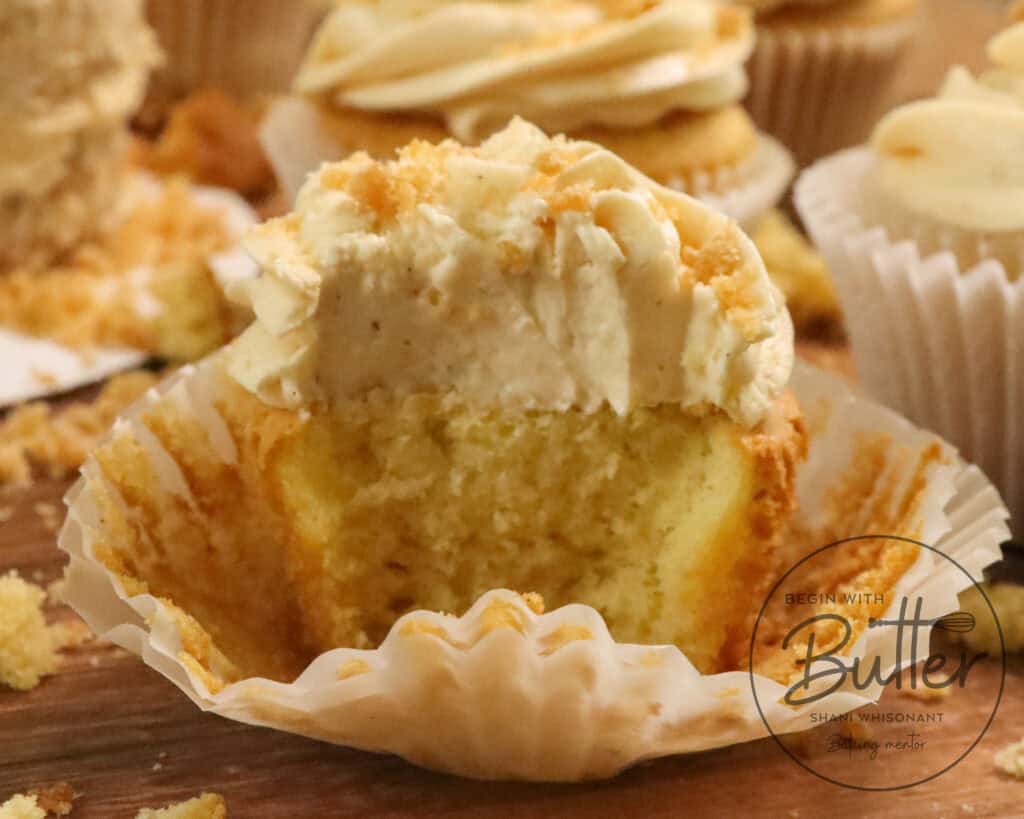
The object with layer cakes is simple: I want to create a moist, almost ethereal crumb that is lighter-than-air. To achieve that, I typically use a lower-protein flour, since it won’t create strong gluten bonds (and thus a tighter, more dense crumb). But again, this is an all-purpose flour head to head, and White Lily is branded as an all-purpose flour, so off to layer cake land we went.
I won’t even bury the lede BB. White Lily is the positive GOAT when it comes to layer cakes. The crumb is absolutely outstanding; it is moist and a little crumbly, and crumbs just…float down the sides of the cake in the most beautiful, almost ethereal display.
King Arthur Baking does a great job as well. With its higher protein content, the crumb is tighter and doesn’t melt on the tongue as much as the White Lily cake, and I’m a texture buff so this is noticeable to me (but I am also admittedly strange in this regard 😂). But Friend, the soft wheat and lower protein content of the White Lily Flour creates such an aesthetically beautiful sight and a melt-in-your-mouth texture that it has quickly become my absolute favorite for layer cakes. I hope you’ll give it a try!
Winner of the Layer Cake Battle: White Lily Flour
Pies
Pies hold a particularly special place in my kitchen. When making these special treats, it’s extremely important to me to have a pie crust that positively shatters when you eat it.
Pie. Meet croissant. Croissant. Meet pie.
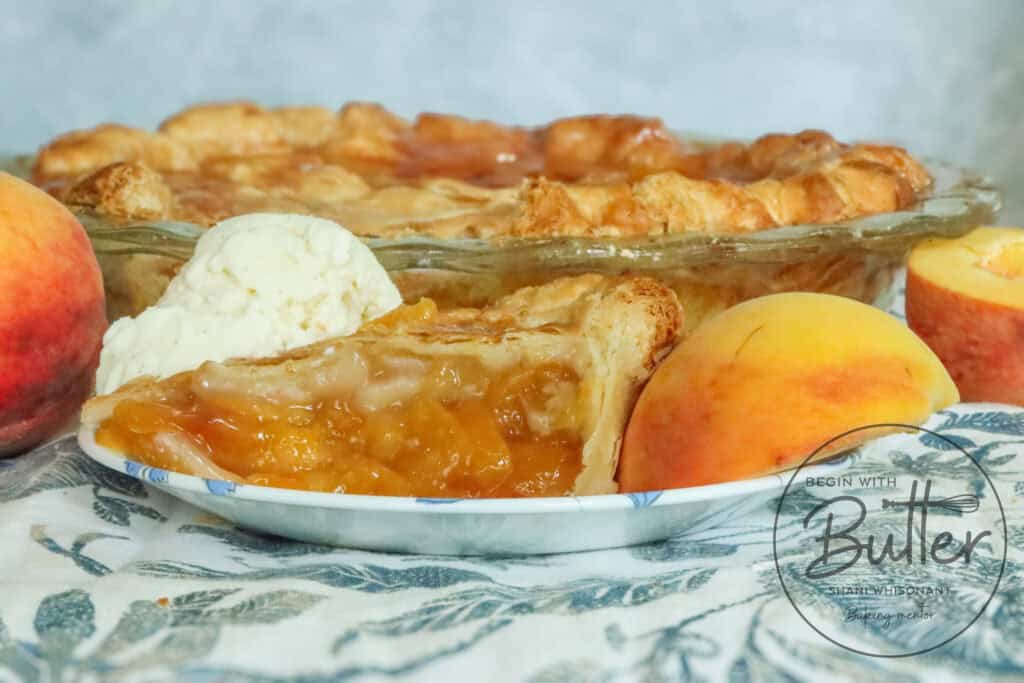
That is what I’m going for with every single pie crust that I ever make. And to ensure this effect, I laminate my dough. (Want to see what I mean by laminate? Check out my post on Apple Hand Pies for a video tutorial!)
Pie dough strikes fear into the most accomplished bakers, because it is a true test of bakers feel. Bakers feel is that instinct that bakers develop as they practice, and practice, and practice some more. It’s the hands and wrists knowing that something literally feels complete. It’s training the eyes to know what to look for to know when something is actually complete. It’s the confidence that you develop overall when you’ve developed proficiency. And when I say that pie crust (and pastry in general) will leave your confidence on the side of the road…
Why mention bakers feel in this discussion? Because it actually dictates my findings in this instance!
Successful pie crust is fully dependent on not overworking the pie dough. When you work the protein (gluten) too much, it creates strong gluten bonds that create more chew, and which are decidedly not flaky. In other words, too much chew = bad pie crust. For this reason, the smart money is on lower-protein flour for this very important task.
For these reasons, I love White Lily. It makes the absolute flakiest, most delicious pie crust I’ve ever made. Watching the final crust do its croissant-inspired thing is a beautiful sight.
BUT, with its lower protein content (and it being closer to a typical cake or pastry flour than a higher-protein all-purpose flour), it can be tricky and frustrating to work with White Lily as a beginning pie maker. This is especially true with my all-butter pie crust. And this is why, as a beginning pie maker, I recommend starting with a higher-protein flour until that bakers feel is well established. 😊
King Arthur Flour is actually a very good all-purpose flour for pie! Though it is a higher-protein flour than White Lily, it still makes a very flaky pie crust that is exceedingly delicious! It is also more forgiving than White Lily, so it will help you establish great muscle memory while you build your pie prowess!
Winner of the Pie Battle: White Lily Flour for intermediate/advanced pie bakers; King Arthur Flour for beginning pie bakers
Final Thoughts
Friends, I thoroughly enjoy ingredient testing. I’m constantly in search of the absolute best ingredients I can source for my baked goods (because ingredients can make a huge difference), so it’s wonderful to be able to do these kinds of tests from time to time.
What do I think? I think you really can’t go wrong with either King Arthur or White Lily. As a baker, you have to determine which flour meets your tastes. So, if you are a die-hard White Lily fan, I say use White Lily! Many baked goods will be lighter than those baked with King Arthur, and if that serves your taste, then keep on keepin’ on with White Lily.
I am going to use them both for different purposes. Working with both of them in their respective strong suits helps me make the absolute best product for you all, and I love that for us.
I will continue to update this post as I test White Lily and King Arthur Baking on more and more, and more, and more products…
Will update my findings as I do each project.
I hope you found this helpful as you go about your baking exploits! Whatever you choose, may you have the best bakes of your life.
See you soon!

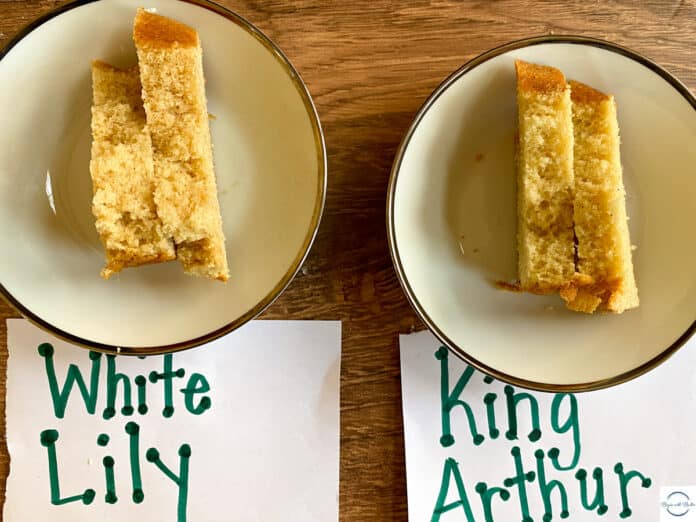
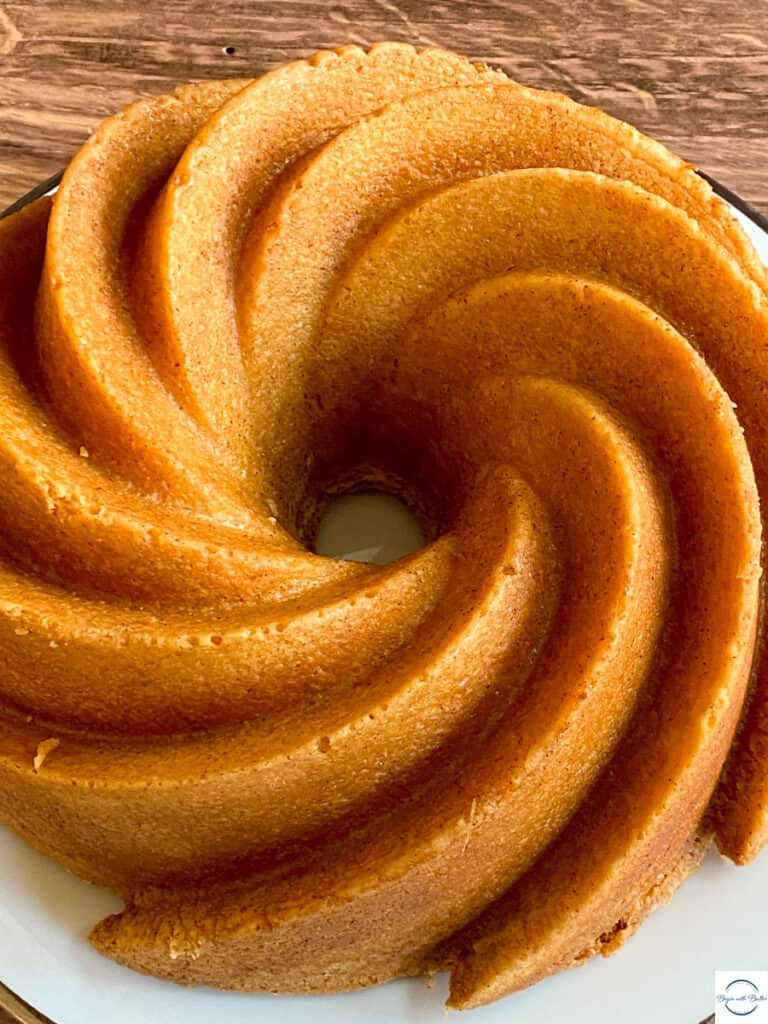

I use them both plus Gold Medal AP. King Arthur (AP & Bread flour) for all breads (except biscuits and quick breads)—a biscuit is not a biscuit without without White Lily (at least in the south)! You can make cakes with White Lily, too, but it’s best if your recipe is written in weight to adjust for the much lighter White Lily. Then I use Gold Medal AP bleached (yes, bleached!) for pie crusts, tarts, brownies, etc. Stella Parks gave a great explanation on Serious Eats of why Gold Medal bleached is her preferred AP flour for most baking. It’s ok for biscuits but not as good as White Lily. KA is not great at all for biscuits. Oh, and sometimes I use Swans Down cake flour for certain cakes. Clearly, do not believe there is one flour for all things! Lol ?
I love this synopsis! Sounds like I have some different flours to test! 😊
I live in the southwest and would like to try out White Lily flour for myself . I’m an ardent King Arthur flour user for like 13 yrs now . But I’d love to try Whute Lily ?? I live here in the high altitude part of America where I think White Lily us primarily in low altitude which makes a difference I most bake goods . But I’m all in for a fun experience and learning curve in my life ????
I love your attitude and can’t wait to hear about your results!
Awww… baking a pound cake in a bundt pan. Something that was never invented when pound cakes were.
1 lb sugar
1 lb butter
1 lb flour
1 lb eggs
1⁄4 teaspoon salt
And yes, King Arthur’s not Lily which would give you a layer cake texture instead of the iconic heavy-as-a-brick texture which neither of yours has.
White Lily is what I use exclusively for biscuits and pie crust…anything flakey. I wouldn’t use it for cookies, personally. So I think you’d get a better sense of White Lily if you put it against King Arthur with biscuits.
Thank you for sharing! Sounds like I have some additional testing to do! ❤️
I used King Arthur Flour on my best pound cake recipe from Julia Child, and it was so dense that I threw the cake out. I haven’t purchased KA Flour since. I don’t like going through the effort of making a cake and being so disappointed. I use Bob Red Mill Pastry Flour for my cakes. I would like to try White Lily though.
Hi lovely. This is Kisha from Kisha’s K’onfections – a new IG follower as of this morning. 03.11.24. I thought your laughter was what made me view your video from beginning to end; but this blog entry really shows you’re my kind of girl! You’re so transparent and detailed and it’s obvious you took out the time and shared for your viewing audience. I love that! You content gives commercial, but your personality and spirit seems truly that of a friend. Now…, about this flour comparison…THANK YOU! I must admit I cringe when Bakers refer to soft fluffy cakes as Pound Cakes. I’m like, “Please don’t confuse the upcoming generation.” If it’s “soft and fluffy”, it’s not a Pound Cake. Just refer to it as a BUNDT. I’m so with you on this…tight, dense, and moist crumb is what our grandmothers fed us. I don’t like confusing the two. lol! Although I haven’t figured the business acumen to share my insights as organized and eloquent as you, I tested White Lilly in my kitchen for my Signature Bundt Pound Cake and found the same result. It was a tender and lighter Crumb and my brain 🧠 reacted…THIS AINT POUND CAKE. You are also absolutely 💯 correct about the lingering flour taste on the palate. I’ve only used King Arthur Bread Flour for my cinnamon rolls. I really like the KA Bread product, but my WL test was up against regular Gold Medal AP, and Gold Medal won.
Sidenote: I do like the comment the nice lady left about using White Lilly for biscuits, Pies, anything flaky…. Since I have WL hanging out in my pantry, I’ll consider making Easter Pie shells with it. ❤️ Keep being wonderful! Your sharing and caring spirit is a much needed delight!
Oh wow! Thank you so much for this amazing review and commentary! I am so glad that you found this blog post useful. ❤️
FWIW, White Lily, in their FAQ, suggests adding 1-2T of their AP flour for every cup of flour in recipes not written specifically for WL AP. This will compensate for the lower protein making for a wetter dough/flour.
I’m a *huge* fan of White Lily Self-rising in pancakes, though I haven’t perfected biscuits yet… Just using the recipe on the WL website, the batter is pretty lumpy, and spreads out on the griddle a bit, but then cooks up super-fluffy.
I’m so glad that you’ve had such good experiences with White Lily! I actually prefer it now as my “cake” flour. Totally understand the manufacturer’s suggestion to add 1-2 tbsp/cup of flour, but I’ve found that I still prefer higher protein flours for pound cakes. Thank you for sharing that information! ❤️
I am not as familiar with King Arthur flour as I am with White Lily. My family has used White Lily for generations- literally. Perhaps it is because most of the baked goods were biscuits, pancakes, dinner rolls, bread and layer cakes- mostly softer textured foods. I often wondered why mom and even grandma would use cheaper flour for cookies- Gold Medal. I bake now if I get any baked goods and I appreciate knowing why I saw different flours at home and a test that explains texture with the different flours. It all makes sense now.
I’m so glad this was helpful for you!
I have, after a couple of years of trying my hand at baking, gotten a couple of good dinner rolls & cinnamon rolls mastered. Pie crust is my kryptonite. I would love a recipe and process that I could possible make work. The pie crust you describe is just like my mama and my grand mama always made. Love the info on your site.
Aw, thank you so much! I would love to share my Easy All-Butter Pie Crust with you! Try it and let me know if you like it! (And just know…the more you practice, the better you’ll get!)
love your comparisons! glad to find someone else is so interested in ingredients. you may also have an answer for another concern I have as you use bundt pans. I have some very old ones that have colored outside finishes…. they are all Nordic…. some much lighter in weight. Do you get different results with the different colors and weights? I know you need to adjust temps with glass. Appreciate any suggestions…… thanks
OMG I’ve been waiting for this question! I absolutely get different results from the lighter (in weight) Nordic Ware pans. While I find that I still get incredible caramelization, I don’t get the deep caramelization that I can expect with their heavier pans. Also, I find that pound cakes stick quite a bit more in these pans, so I’m a lot more conscientious about how I prep them for baking. You’re so fortunate to have antique Nordic Ware pans! I hope you’re getting a lot of wonderful use from them!
What type flour do you recommend for baking cookies–chocolate chip, pecan spice, oatmeal, peanut butter blossoms–high or low protein type?
Hi there! I always use all-purpose flour in cookies. Flours with a lower protein content (cake flour, pastry flour) won’t hold together well during the bake, and could lead to the dreaded crumbly cookie. Happy baking!!!
I’ve always used King Arthur; it’s the brand my grandmother always used. I’ve never heard of White Lily. Is that a regional brand, like maybe from the South? Is it available nationally?
Hi Linda! White Lily is hugely popular in the Mid-Atlantic and Southern states. I *knew* about it when I was growing up because my mother was familiar with it, but I really learned how to use it when I moved to Maryland. You can get it shipped nationally from Amazon. Because I tend to over-answer questions (😬) here is a link to the White Lily Flour store finder: https://www.whitelily.com/product/enriched-bleached-all-purpose-flour/ I hope this helps!
Since White Lily is softer it needs 1 cup + 2 tablespoons White Lily flour to equal the 120 grams in 1 cup of all-purpose flour. In my experience without the added flour, my pound cake looks like your White Lily pound cake due to the lower flour to liquid ratio. With the added flour the crumb is pound-cake tight. Depending on the recipe, I may add another 5 to 20 grams of flour until satisfied with a consistent result.
Many bakers use White Lily in place of Swans Down cake flour, even for wedding cakes, as do I. Swan’s Down does not give measurements in grams, while directing to always sift, scoop, and level off. Swans Down also says to add 2 tablespoons to each cup of flour in a standard recipe.
Your Snickerdoodle Pound Cake is saved to my CAKES FILE. It looks amazing!
If you have not tried the King Arthur 2017 Recipe of the Year Lemon Bliss Cake, it’s the best lemon cake I’ve ever eaten … actually one of the best cakes I’ve ever tasted. It’s the go-to recipe in the Elegant Bundt Pan (round and heart-shaped) for my now 86-year-old mother’s birthday cake … with the caveat of using half milk and half lemon juice in place of the 1 cup of milk, to up the lemon flavor in the cake itself. It makes delightful tea cakes, cupcakes, mini-Bundt cakes, etc. … THE BEST LEMON CAKE … and one of the BEST CAKES in texture and moisture, surpassing some of my favorite pound cakes.
High ratio cakes need a flour with more structure as your comparison confirms. I live in Va. I use WL for biscuits. And the substitute of replacing a tablespoon of flour for corn starch works well in a pinch. Thanks for your demonstration.